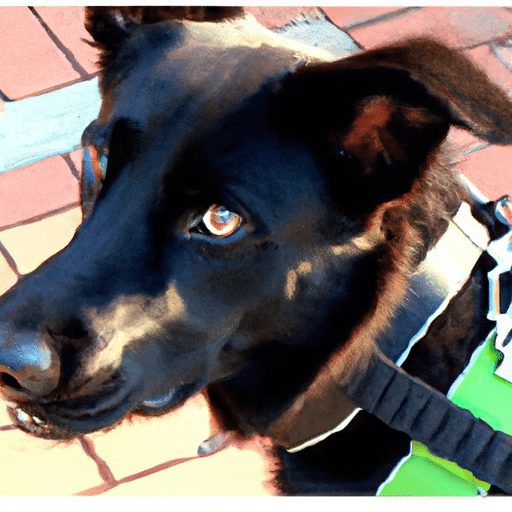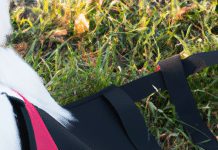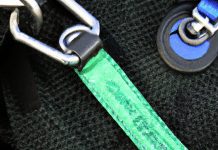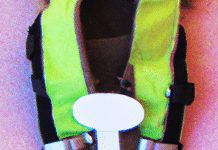In this article, we explore a common concern among dog owners: whether it is safe to use a harness for a dog with a history of aggression. We understand that dealing with a dog’s aggressive behavior can be daunting, and we are here to provide guidance and alleviate any worries you may have. Join us as we discuss the effectiveness of harnesses, the potential benefits and limitations, and important considerations to keep in mind when using one for a dog with aggression issues.
Understanding the Dog’s Behavior
Table of Contents
Recognizing Aggressive Behavior
When dealing with an aggressive dog, it is crucial to understand and recognize the signs of aggression. Aggressive behavior can manifest in various ways, including growling, snarling, barking, lunging, or even biting. By being able to identify these behaviors, we can take appropriate measures to ensure both the safety of our dog and those around us.
Identifying Triggers
Aggression in dogs often stems from specific triggers. It is essential to identify these triggers to prevent potentially dangerous situations from arising. Triggers can range from environmental factors such as unfamiliar people or animals to internal factors like fear or anxiety. By pinpointing what triggers our dog’s aggression, we can better manage their behavior and create a safer environment.
Understanding the Root Cause
To effectively address aggression in dogs, it is essential to delve deeper into the root cause of their behavior. Aggression can be a result of various factors, including improper socialization, fear, past traumatic experiences, or health issues. Understanding the underlying cause can help us develop a more tailored approach to managing our dog’s aggression and finding suitable solutions.
Benefits of Using a Harness for Aggressive Dogs
Increased Control and Restriction
One of the significant benefits of using a harness for aggressive dogs is the increased control it provides. Unlike traditional collars, harnesses distribute the pulling force evenly across the dog’s body, reducing the risk of injury and allowing for better control during walks. This added control enables us to intervene quickly and effectively if our dog starts displaying aggressive behavior.
Reduced Risk of Escaping
Aggressive dogs may try to escape or bolt unexpectedly. Using a harness can significantly reduce this risk, as it provides a more secure and snug fit compared to collars. With a properly fitted harness, we can have peace of mind knowing that our dog is less likely to slip out and potentially cause harm to themselves or others.
Less Strain on the Neck and Throat
Traditional collars can put strain on a dog’s neck and throat, especially when they pull aggressively. This strain can lead to discomfort, pain, or even injury. Harnesses alleviate this issue by distributing the pressure across the chest and back, minimizing the strain on sensitive areas. By using a harness, we can ensure our dog’s comfort and well-being, even during walks that may trigger their aggression.
Types of Harnesses to Consider
Front-Clip Harness
The front-clip harness is a popular choice for aggressive dogs, as it provides excellent control and discourages pulling behavior. This type of harness features a leash attachment at the front, which redirects the dog’s pulling force towards the side, making it easier to redirect their attention and discourage aggressive behavior.
Head Collar
Head collars, also known as “halters” or “gentle leaders,” are designed to fit over the dog’s head and muzzle. They give us more control over the dog’s movements by redirecting their head and allowing us to steer them away from potential triggers. Head collars are particularly useful for dogs with a history of aggression, as they provide effective control without causing discomfort.
No-Pull Harness
No-pull harnesses are designed to discourage pulling behavior by redirecting the dog’s energy and providing more control. They often feature a front attachment point for the leash, similar to the front-clip harness. Additionally, many no-pull harnesses have additional padding to ensure the dog’s comfort, making them a suitable option for aggressive dogs who may resist traditional collars or harnesses.
Safety Escape Harness
For aggressive dogs who may have a higher risk of escaping or bolting, a safety escape harness can be an excellent choice. These harnesses feature additional safety measures such as extra buckles, double straps, or escape-proof designs. By providing a secure fit and added security features, safety escape harnesses help minimize the chances of our dog escaping and potentially causing harm.
Training Techniques to Accompany a Harness
Positive Reinforcement
Positive reinforcement training techniques can be highly effective when dealing with aggressive behavior in dogs. By rewarding good behavior and using treats, praise, and play as motivators, we can encourage our dog to exhibit desired behaviors while also building trust and strengthening the bond between us. Positive reinforcement can help communicate to our dog that aggression is not necessary or beneficial in certain situations.
Counter Conditioning and Desensitization
Counter conditioning and desensitization are essential techniques in training aggressive dogs. These methods involve gradually exposing our dog to the triggers that elicit aggressive behavior while pairing them with positive experiences. By associating positive experiences with previously fear-inducing triggers, we can help our dog develop a more positive and calm response. This process may take time and patience, but with consistent training and positive reinforcement, progress can be made.
Redirecting Focus
Redirecting our dog’s focus is another effective training technique to employ alongside a harness. By redirecting their attention towards more desirable behaviors, such as sitting or focusing on a toy, we can distract them from potential triggers that may lead to aggression. Consistency and patience are key when implementing this technique, as it may take time for our dog to learn and respond to redirection cues.
Choosing the Right Harness for an Aggressive Dog
Proper Fit
When selecting a harness for an aggressive dog, ensuring the proper fit is crucial. A well-fitting harness should be snug but not overly tight, allowing for comfortable movement while preventing the dog from slipping out. It is essential to measure our dog’s chest and neck circumference and consult the manufacturer’s sizing guide to choose the appropriate size. Additionally, adjustable straps and buckles can help customize the fit for our dog’s specific body shape.
Durability and Strength
Aggressive dogs may exert more force than average during walks or training sessions. Therefore, it is essential to choose a harness that is durable and built to withstand this extra strain. Look for harnesses made from sturdy materials such as nylon or reinforced polyester, with strong stitching and metal hardware for added durability. A harness designed to withstand the specific needs of aggressive dogs will ensure long-lasting use and effective control.
Comfort
Comfort is a vital consideration when choosing a harness for an aggressive dog. Look for harnesses with padded straps and chest plates to minimize any potential discomfort or rubbing against the dog’s skin. It is also important to consider the breathability of the material, particularly during hot weather. A comfortable harness will not only keep our dog content and at ease but also make them more receptive to training and less likely to exhibit aggressive behavior.
Preparing for Walks with an Aggressive Dog Using a Harness
Choosing Appropriate Walking Locations
When walking an aggressive dog, it is essential to select appropriate locations that minimize potential triggers. Avoid heavily crowded areas or places with an abundance of unfamiliar dogs or people, as these may heighten their aggression. Opt for quieter routes or designated dog-friendly areas where we have better control over our dog’s environment. By proactively choosing suitable walking locations, we can help set our dog up for success and reduce the likelihood of confrontations.
Having a Backup Plan
Even with a reliable harness and proper training, it’s important to have a backup plan when walking an aggressive dog. This can include carrying treats or toys as distractions, having a designated “safe spot” in case of emergencies, or using alternative walking routes if necessary. By being prepared for unexpected situations, we can better manage our dog’s behavior and ensure their safety as well as the safety of those around us.
Informing Others
When walking an aggressive dog, it’s crucial to prioritize the safety and comfort of others we may encounter. It is considerate and responsible to inform others, such as fellow dog owners or pedestrians, that our dog may display aggressive behavior. Clear communication can help prevent any potential incidents and allow people to have an appropriate response or distance themselves if necessary. By being proactive and open about our dog’s behavior, we can create a more understanding and safe environment.
Working with a Professional Trainer or Behaviorist
Seeking Professional Guidance
Dealing with an aggressive dog can be challenging, and seeking guidance from a professional trainer or behaviorist is highly recommended. These professionals have the knowledge and expertise to assess our dog’s behavior, develop a customized training plan, and guide us through the training process. They can provide valuable insights and strategies to address the underlying causes of aggression and promote positive behavioral changes.
Implementing a Training Plan
A professional trainer or behaviorist will develop a comprehensive training plan tailored to our dog’s specific needs. This plan may include a combination of exercises, socialization, and behavior modification techniques. It is crucial to follow the trainer’s instructions consistently and provide regular updates on our dog’s progress. Implementing a well-designed training plan under the guidance of a professional can significantly improve our dog’s behavior and help curb their aggression.
Monitoring Progress
Tracking our dog’s progress throughout the training process is essential. Regularly assess their behavior and note any changes or improvements. Keep track of triggers, their reactions, and the effectiveness of the training techniques employed. Regular communication with the trainer or behaviorist allows for ongoing evaluation and adjustment of the training plan as needed. Monitoring progress enables us to celebrate small victories and make necessary adjustments to address any setbacks in our dog’s behavior.
Legal and Ethical Considerations
Consulting Local Laws and Regulations
When dealing with an aggressive dog, it is essential to be acquainted with local laws and regulations concerning the ownership and handling of such dogs. Some jurisdictions may have specific requirements or restrictions in place, such as mandatory muzzling or leash laws. Familiarize oneself with these rules and ensure compliance to both protect our dog and ourselves from potential legal consequences.
Taking Responsibility as an Owner
As responsible dog owners, it is our duty to take full responsibility for our dog’s behavior and actions. This includes providing the necessary training, socialization, and appropriate management techniques to prevent any harm or incidents caused by our aggressive dog. By understanding the impact our actions have on public safety and acting responsibly, we contribute to a positive perception of aggressive dog breeds and decrease the likelihood of negative encounters.
Respecting Others’ Safety
When walking an aggressive dog, it is important to prioritize the safety and comfort of others we may encounter, including other dogs and pedestrians. Always keep a safe distance from unfamiliar dogs and leash our dog appropriately. Be prepared to redirect our dog’s focus or move away from potential triggers. Respecting others’ safety not only prevents potential incidents but also fosters a harmonious relationship between dog owners and the community.
Common Mistakes to Avoid
Using the Harness as a Fix-All Solution
While a harness can be a valuable tool for managing an aggressive dog’s behavior, it is essential to recognize that it is not a fix-all solution. A harness should be used in conjunction with appropriate training techniques and professional guidance to address the root causes of aggression. Relying solely on a harness may not effectively address the underlying issues, potentially leading to ongoing aggressive behavior.
Neglecting to Address Underlying Issues
Using a harness should not be a substitution for addressing and resolving any underlying issues that contribute to our dog’s aggression. Aggression in dogs can arise from a variety of causes, including fear, anxiety, or lack of socialization. It is crucial to work with a professional to address these underlying issues through appropriate training, desensitization, and behavior modification techniques.
Skipping Training and Socialization
Training and socialization are crucial aspects of managing an aggressive dog’s behavior, and they should not be neglected. A well-trained dog is less likely to exhibit aggressive behavior, as they have learned appropriate ways to communicate and interact with their environment. Consistently practicing obedience commands, reinforcing positive behaviors, and providing opportunities for controlled socialization can greatly contribute to reducing our dog’s aggression.
Conclusion
Managing an aggressive dog’s behavior requires a combination of understanding, patience, and appropriate tools such as a harness. By recognizing and addressing the triggers and root causes of aggression, choosing the right type of harness, and employing effective training techniques, we can greatly improve our dog’s behavior and provide a safer and more enjoyable experience for both our dog and those around us. Remember, seeking professional guidance and adhering to legal and ethical responsibilities as a dog owner are essential components of effectively managing aggression in dogs. With the right approach, we can help our aggressive dog become a happier, well-behaved companion.






























